Abstract
Of the complement activating factors present in Trypanosoma lewisi, the major component, a carbohydrate containing substance was further investigated. This component was found to have a lag time of complete activation of 2 CH50 units of bovine complement of approximately 15 minutes while 1% trypsin (a known activator of complement, used as a control system) was capable of instant consumption of a similar quantity of complement. In addition, the complement activating factor of trypanosomes was observed to be stable at 100 degrees C for 15 minutes and over a pH range of 3.0 to 11.0. Thin layer chromatography studies suggested that at least part of the active component contained lipid, perhaps indicating that it may be glycolipid in nature.
Full text
PDF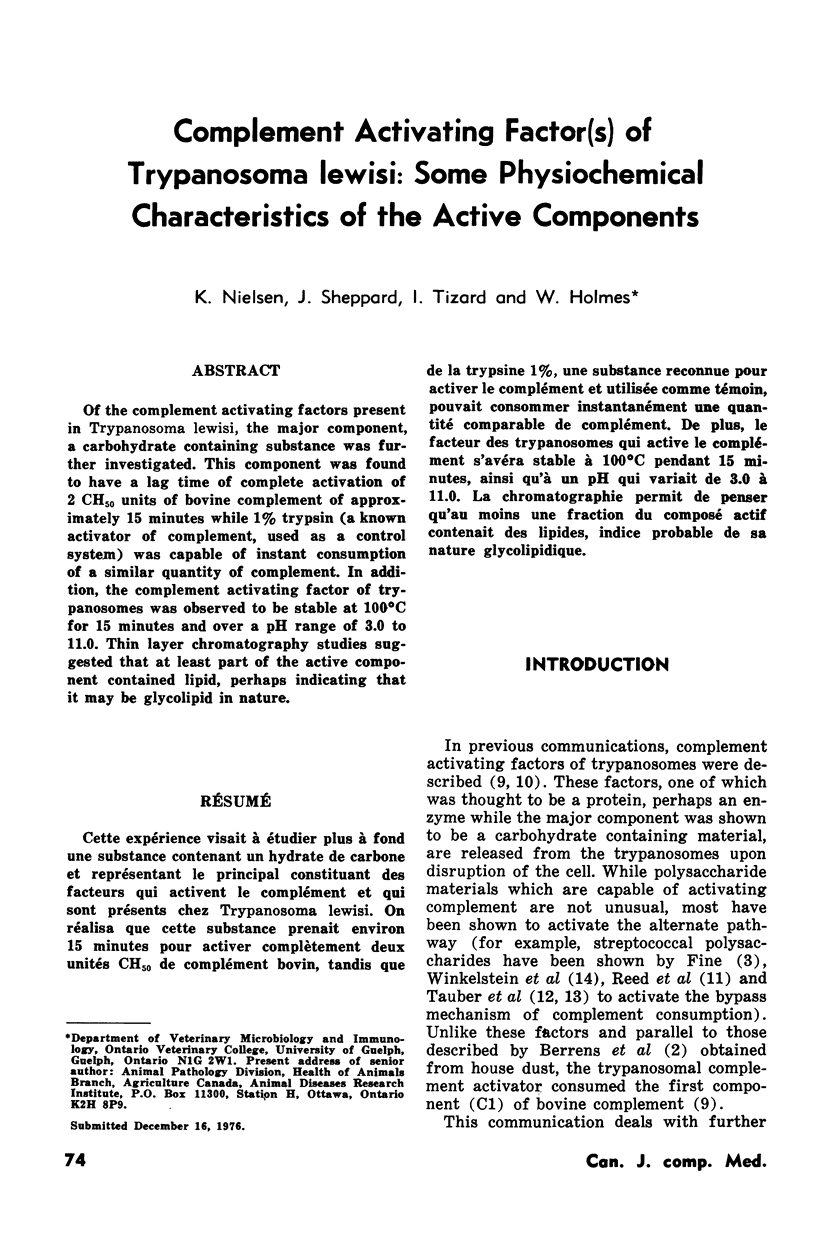
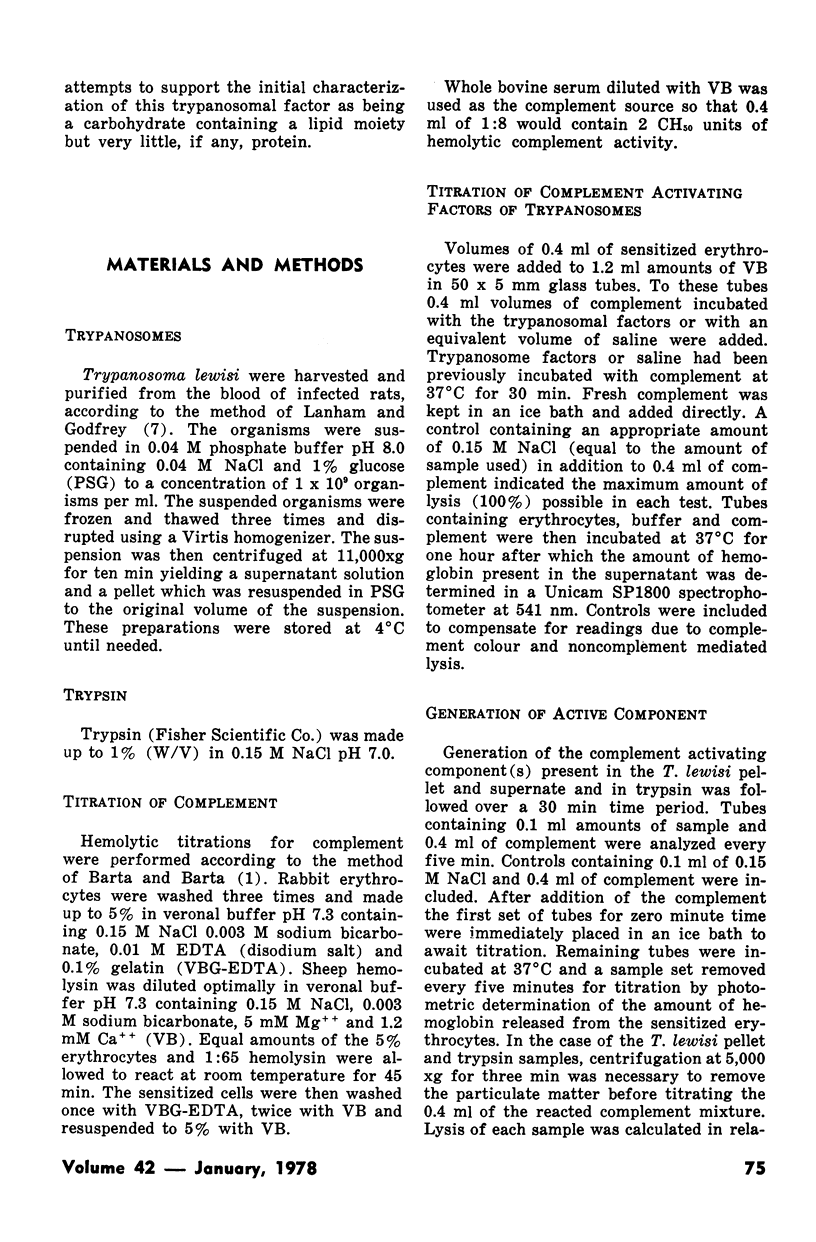
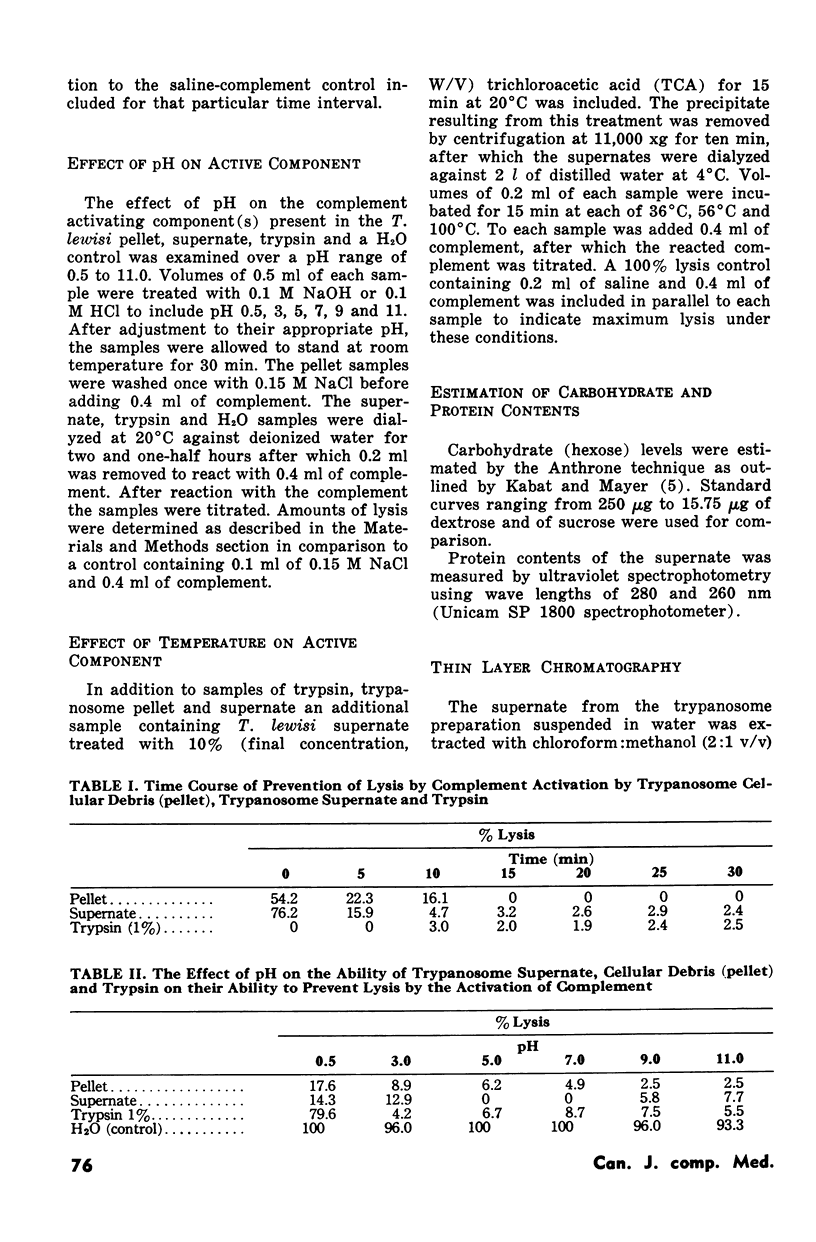

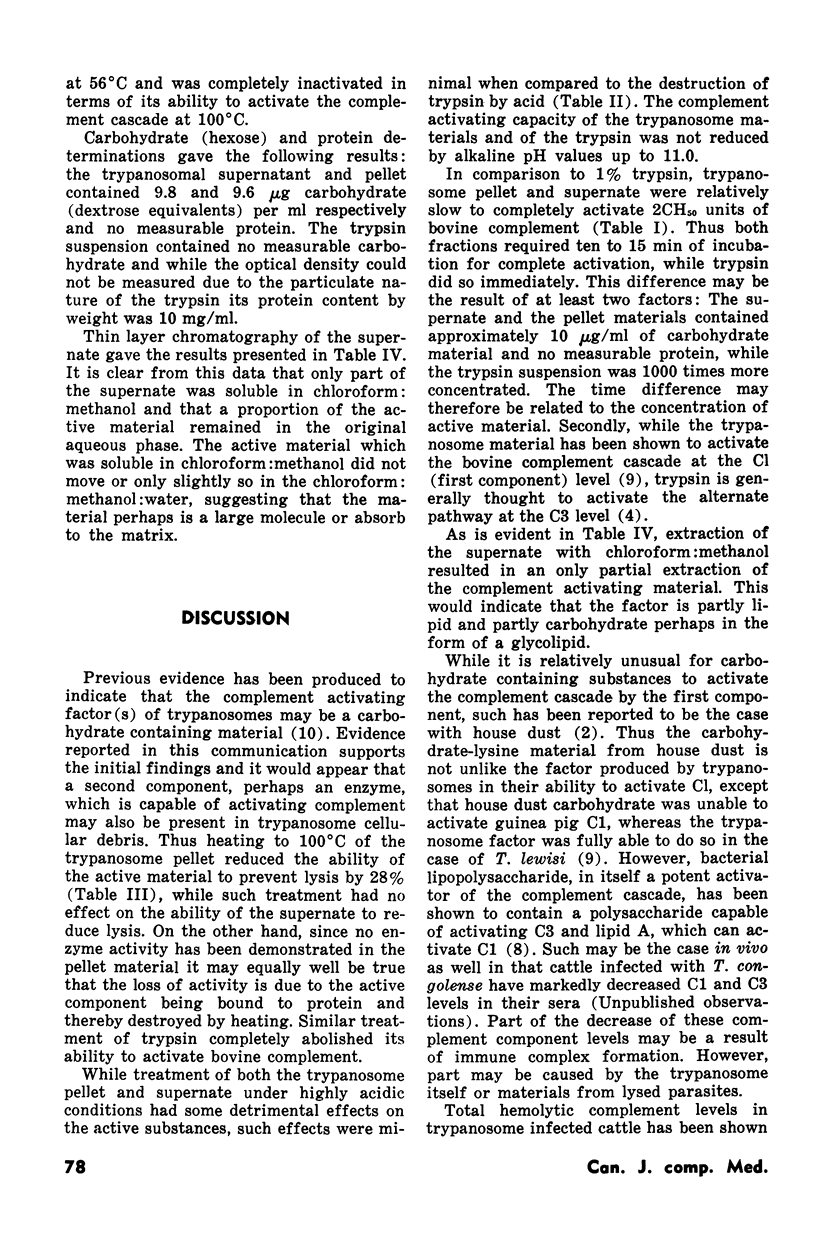
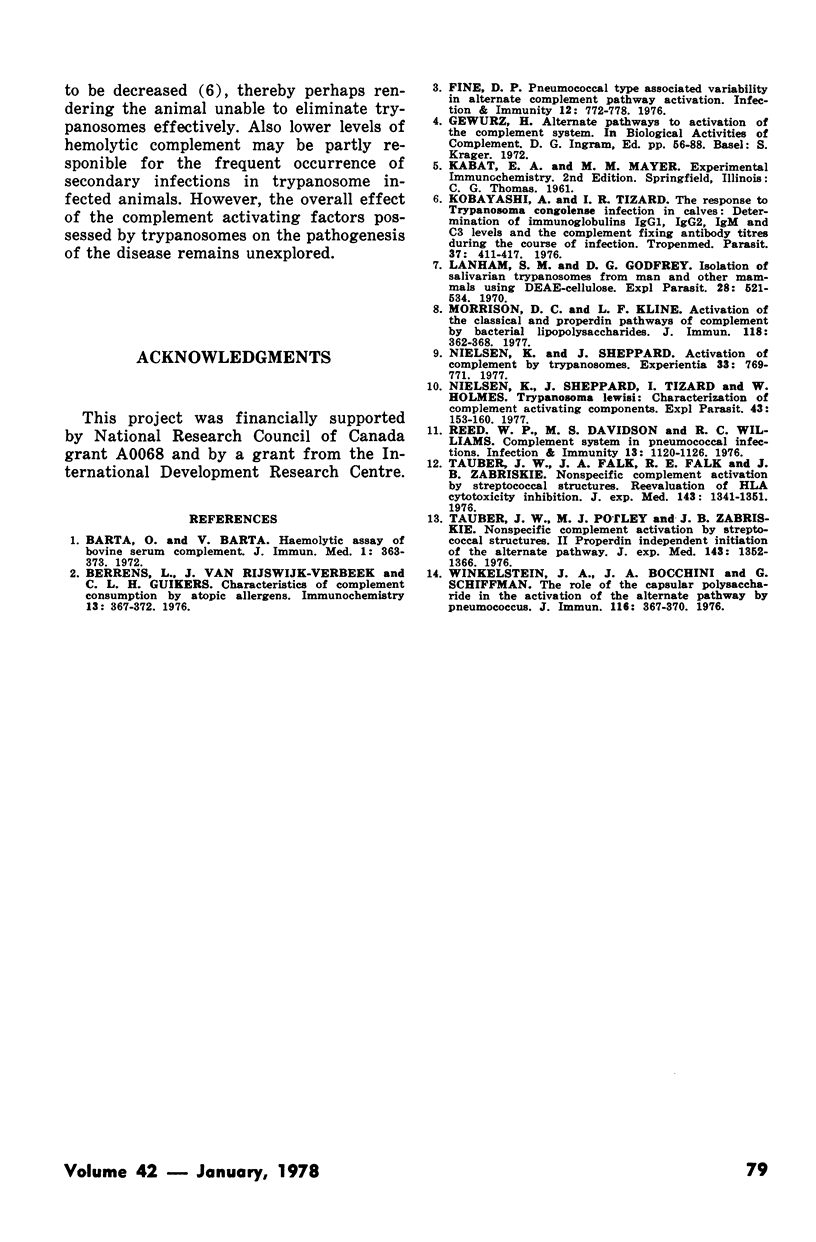
Selected References
These references are in PubMed. This may not be the complete list of references from this article.
- Barta O., Barta V. Haemolytic assay of bovine serum complement. J Immunol Methods. 1972 Aug;1(4):363–374. doi: 10.1016/0022-1759(72)90029-4. [DOI] [PubMed] [Google Scholar]
- Berrens L., Van Rijswijk-Verbeek J., Guikers C. L. Characteristics of complement consumption by atopic allergens. Immunochemistry. 1976 May;13(5):367–372. doi: 10.1016/0019-2791(76)90369-4. [DOI] [PubMed] [Google Scholar]
- Fine D. P. Pneumococcal type-associated variability in alternate complement pathway activation. Infect Immun. 1975 Oct;12(4):772–778. doi: 10.1128/iai.12.4.772-778.1975. [DOI] [PMC free article] [PubMed] [Google Scholar]
- Kobayashi A., Tizard I. R. The response to Trypanosoma congolense infection in calves. Determination of immunoglobulins igG1, igG2, igM and C3 levels and the complement fixing antibody titres during the course of infection. Tropenmed Parasitol. 1976 Dec;27(4):411–417. [PubMed] [Google Scholar]
- Lanham S. M., Godfrey D. G. Isolation of salivarian trypanosomes from man and other mammals using DEAE-cellulose. Exp Parasitol. 1970 Dec;28(3):521–534. doi: 10.1016/0014-4894(70)90120-7. [DOI] [PubMed] [Google Scholar]
- Morrison D. C., Kline L. F. Activation of the classical and properdin pathways of complement by bacterial lipopolysaccharides (LPS). J Immunol. 1977 Jan;118(1):362–368. [PubMed] [Google Scholar]
- Nielsen K., Sheppard J. Activation of complement by trypanosomes. Experientia. 1977 Jun 15;33(6):769–771. doi: 10.1007/BF01944182. [DOI] [PubMed] [Google Scholar]
- Nielsen K., Sheppard J., Tizard I., Holmes W. Trypanosoma lewisi: characterization of complement-activating components. Exp Parasitol. 1977 Oct;43(1):153–160. doi: 10.1016/0014-4894(77)90018-2. [DOI] [PubMed] [Google Scholar]
- Reed W. P., Davidson M. S., Williams R. C., Jr Complement system in pneumococcal infections. Infect Immun. 1976 Apr;13(4):1120–1125. doi: 10.1128/iai.13.4.1120-1125.1976. [DOI] [PMC free article] [PubMed] [Google Scholar]
- Tauber J. W., Falk J. A., Falk R. E., Zabriskie J. B. Nonspecific complement activation by streptococcal structures. I. Re-evaluation of HLA cytotoxicity inhibition. J Exp Med. 1976 Jun 1;143(6):1341–1351. doi: 10.1084/jem.143.6.1341. [DOI] [PMC free article] [PubMed] [Google Scholar]
- Tauber J. W., Polley M. J., Zabriskie J. B. Nonspecific complement activation by streptococcal structures. II. Properdin-independent initiation of the alternate pathway. J Exp Med. 1976 Jun 1;143(6):1352–1366. doi: 10.1084/jem.143.6.1352. [DOI] [PMC free article] [PubMed] [Google Scholar]
- Winkelstein J. A., Bocchini J. A., Jr, Schiffman G. The role of the capsular polysaccharide in the activation of the alternative pathway by the pneumococcus. J Immunol. 1976 Feb;116(2):367–370. [PubMed] [Google Scholar]


